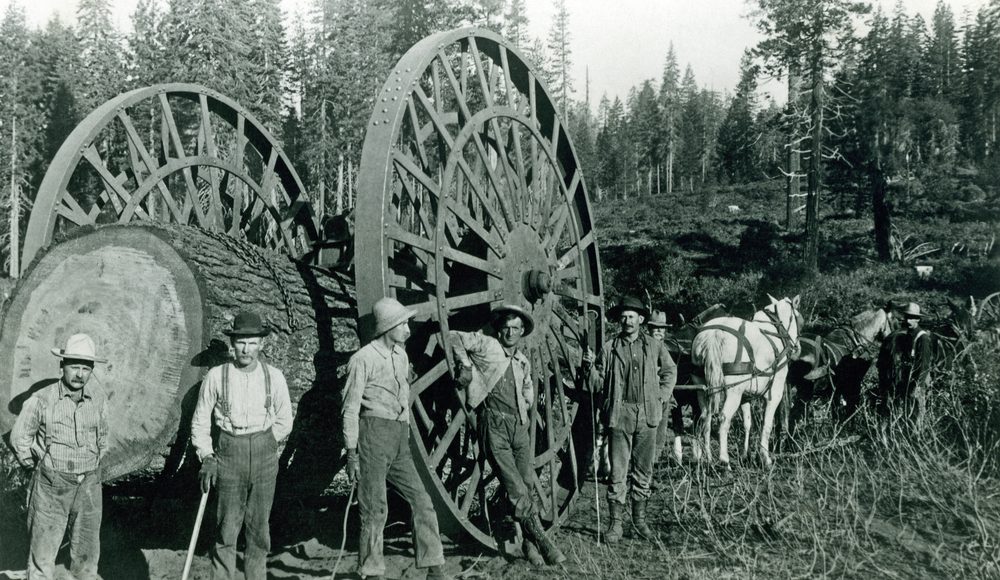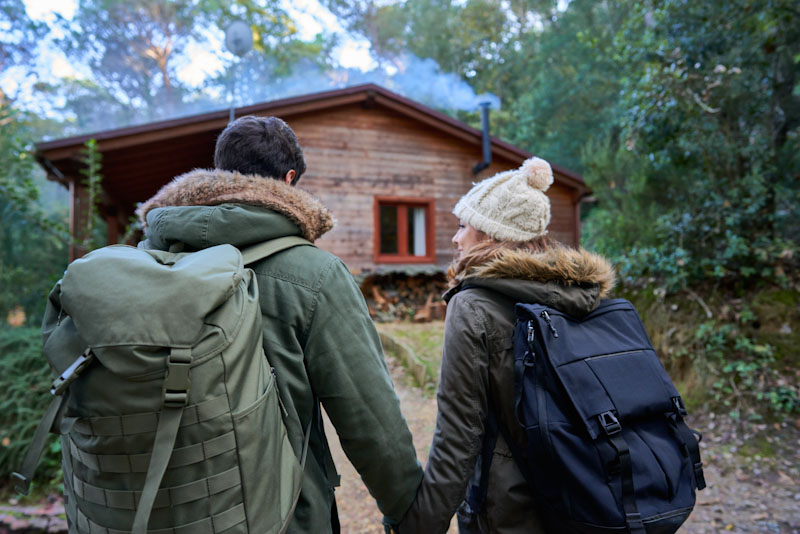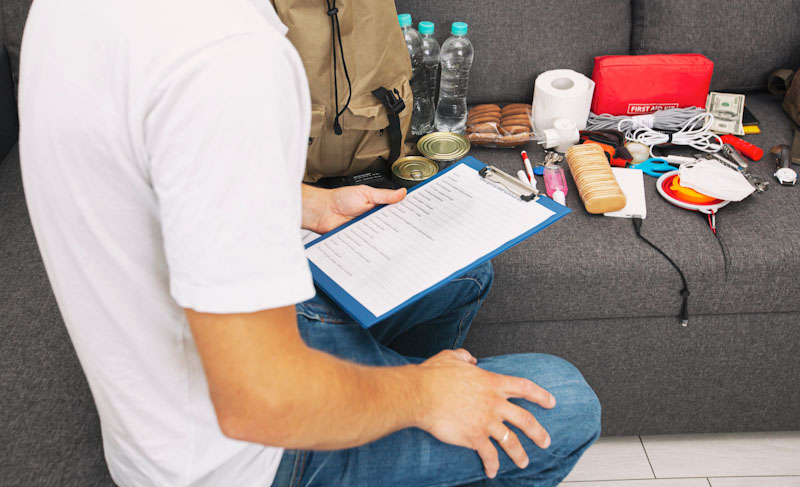The idea of bugging out in the case of a disaster isn’t new. There have been many times when people left their homes throughout human history due to one disaster or another.
While some disasters came on so quickly that people couldn’t run, there were also those which gave people some opportunity to escape. For example, wars, volcanoes erupting, and droughts might offer a chance to escape for those who chose to take the risk and do so.
Bugging out from a disaster wasn’t the only reason people left their homes and migrated to some distant land unless you call lack of economic opportunity a disaster. Just like today, history is filled with examples of people who “bugged out” from their homes in search of a better life. This country exists because of that. The westward expansion of the United States in the 1800s also happened because of it.
The westward expansion was an exciting period in American history, with many ordinary people pulling up stakes and tying their futures to a dream. The lure of free land out west, offered through the Homestead Act of1862, provided ample motivation to move west in a land where the right to vote only existed for property owners. Some four million people filed homestead claims, although only 1.6 million deeds were issued to people who met the requirements to have the land they claimed deeded to them by the government.
But not everyone who migrated west staked a land claim. There were three million more people who moved west as pioneers but never filed a claim. Instead, those people might have bought land from the railroad or a lot in a new town.
Regardless of their reasons for going west and their ultimate destination, most people traveled in groups to protect themselves from danger. These groups or “wagon trains” worked together to ensure their survival. A typical train would contain anywhere from 30 to 200 wagons and was accompanied by upwards of 12,000 cattle and sheep. While the cattle industry has been romanticized by Hollywood, with shepherds becoming one category of bad guys in the movies, many farmers also raised sheep for wool (an excellent cash crop) and food.
Contrary to popular opinion, the Conestoga wagon was not the wagon of choice for use on the wagon train; one of its decedents was – the Prairie Schooner. The Conestoga was a freight wagon built to carry about six tons of cargo. The curved bottom and sloped sides were calculated to keep the load from shifting, while the canvas top would protect it from the rain.
In contrast, the Prairie Schooner was smaller, with a flat bottom and straight sides. Where the sides of the Conestoga were about four feet tall, those of the Prairie Schooner were only two to three feet high. However, they did share the canvas cover, stretched over wood bows and often angled outwards in the front and back to provide even more protection from the elements; and that was usually a double cover, providing at least a little bit of insulation. The wagon weighed about 1,300 pounds and carried a cargo of about 2,000.
In many ways, the Prairie Schooner was an ideal bug-out vehicle. While nowhere near as fast as our modern vehicles, it was much more self-sufficient, not needing to stop at gas stations. No mechanics were required. If a tire was needed, the wagon train’s blacksmith could form it out of a steel strap that was carried along. All other repairs could be accomplished by the owner using tools they brought along. Everyone was expected to take enough supplies for their family, including those needed for making repairs. Those who organized the trains provided a list of supplies that families had to buy to be included in the train.
Those pioneers did a lot of things, which make sense from a bug out point of view, more specifically from surviving a bug out. We don’t necessarily do some of those things in our own prepping, and it might be good for us to add.
1. They Didn’t Leave Alone
Perhaps the most shocking thing to us, from a bug-out point of view, is that these people didn’t head out on their own to head west. While I’m sure that a few hardy souls tried that, it certainly wasn’t the norm. Traveling by one’s self was dangerous, making it much more logical to travel in a group.
That group became a community along the way, with friendships forming and people learning who they could count on. Some train members would be sought out for their professional skills, helping them establish their businesses, even before arriving at their destinations. By the time they reached land to settle on, many people would stake their claims close together, even if the group had split into several smaller groups to do so.
This is so different than our current bug-out plans as to be otherworldly. I have yet to meet any survival group that plans for bugging out as a group. They might have a joint destination in mind, but they don’t intend to go there together. That’s causing them to miss out on the opportunity to be mutually supporting along the way, increasing their chances of everyone arriving alive.
2. They Had a Guide who Knew the Way and the Country
Every wagon train had at least one guide, usually a professional who had taken other trains west. These were often former mountain men who had spent years in the Rockies. Their knowledge of the trail and surviving in the wilderness was invaluable. In addition to being the train’s guide, they became the teacher of these new pioneers, showing them how to do countless things needed to survive in the wilderness.
Put into today’s context, each of us needs someone in our bug out who is intimately familiar with every step along the way from our homes to our ultimate destination, including alternate routes and perhaps hidden sources of supply (like water) along the way. Yet how many of us have that? How many of us have even traveled the route to make sure that our vehicle can do it from end to end?
3. They Traveled Self-Sufficiently
Once those people left St. Louis and the other starting cities to head west, there wasn’t another shopping center, convenience store, or stage stop they could go to for supplies. Until they established a community large enough to attract shipping companies or the railroad, the only supplies they would have available to them were the things they brought with them, those they harvested from nature, and those they made for themselves.
That’s precisely what we can expect in a bug out. While we might have some supplies cached along the way or at our destination, we can’t count on being able to stop for gas, buy a burger, or getting a flat tire repaired. So if we aren’t self-sufficient enough to get from our homes to our survival retreats, what makes us think that we’re going to survive?
4. They Customized their Wagons
While we don’t see it in the movies, many people heading west took time to customize their wagons before leaving. They’d build cabinets on the inside to store things, as well as adding more on the outside. At least one water barrel strapped to the outside. Even the space under the wagon was used, with a canvas hammock to throw wood and cow chips into for the fire, as well as a hook to hang a bucket for churning milk into butter. It sounds a lot like some of the custom bug-out vehicles I see.
5. They Made Do with what They Had
As part of life on the wagon train and once they reached their destination, those hearty pioneers learned to make do with what they had. Trash wasn’t a problem back then, as every bit of scrap and packaging was used for something. Burlap sacks became towels; a barrel leftover from flour was used as a water barrel, and scraps of fabric were turned into quilts.
This may be a problem for us in our disposable society. We’re so used to throwing things away that we’re the third largest trash producer, per capita, in the world. Yet when things fall apart, much of what we now consider trash will probably be found to have some use.
6. Their Wagons weren’t RVs. They were there to Carry Supplies
One of the fundamental differences between those pioneers and us is that they didn’t turn their wagons into RVs, regardless of what the movies show us. Instead, space was limited and reserved for carrying supplies. In addition, there may not have been enough space in the wagon for the family to ride, as many preferred to walk rather than ride over a bumpy trail in a vehicle without a suspension.
Since there wasn’t space inside the wagon for the family to sleep, they either slept in tents or on the ground, under the tent. This gave them more space, which was ultimately more comfortable. However, while they could retreat to the wagon if necessary, it wouldn’t have been as comfortable.
When I look at the pictures of many bug-out vehicles I see today, they look like they’re being set up for bugging out, as much as they are being set up for camping out in the rough country. While that’s great, it always leaves me wondering where the people are going to carry their supplies. If all the room they’ve got for supplies is what I see in their rigs, they’re not planning on surviving very long.
7. They Only Took what they Needed
The other way they made the most out of the limited space they had available to them was to carry along only the things they needed. We’ve all heard the stories about furniture being left along the way, which only serves to accentuate my point. They may have brought grandma’s chest of drawers along because it meant something to them, but when push came to shove, their livestock couldn’t pull the wagon with all that extra weight.
When I look at some of the “survival gear” that people buy, I have to ask myself, “Is that something that’s going to be useful, or will it end up alongside the trail?” If we all asked ourselves this question a little more often, we might be able to create a better bug out.
8. They Had a Clear Destination in Mind
Everyone who set out on the wagon trails had a clear destination in mind, whether Oregon, California, or somewhere along the way. They were chasing a dream, every one of them, but it was a specific dream. They weren’t just “going west”; they were going someplace.
Sadly, I know many preppers who have their bug-out bags packed, their bug-out vehicles built but don’t have a destination in mind other than “out in the wilderness.” While plans can change, the beginning of any bug-out planning has a specific location to go to where you can survive.
9. They Were Prepared to Establish a Homestead when they Arrived
These people traveled with everything they needed to build a home, plant crops, and establish their homestead when they arrived.
That meant carrying the blade for a sickle, without the handle or a plow shear without the body of the plow. But in those cases, they were fully prepared to make what they needed out of what they could find. Fashioning an ax or sickle handle out of a tree branch was a big deal for people who couldn’t go to the lumberyard to buy one.
As best as I can recollect, I haven’t seen anyone’s bug-out setup, including full-sized tools to build a cabin with. Yet, somehow, people are planning on building a house with a camp hatchet, folding shovels, wire saw, and a knife. Good luck with that. Better to add an ax, bow saw hammer, framing chisel, and other tools to the load and be ready to build that cabin in the woods.











Bill In Idaho | June 5, 2021
|
Thank you Very Much, Bill. We All need a dose of Truth and Reality to keep us going straight. You provide that time and time again.
Judge Holden | June 6, 2021
|
One of the lesser known Westward ‘bug outs’ was the Colorado gold rush of 1859. 150 men joined together to travel to the wilderness of the Rockies, most to mine gold, some to build a town. Within 3 years the area that became Denver had a growing population of 10,000. This article makes you think about what is possible for a group of people working together.
Ron Brown | June 9, 2021
|
Excellent article. Thank you. Probably Item #1 (bugging out as a group) is most important. It would hard to drive the car all day AND stand guard duty all night. But for most of us, that’s the plan.
Mariam | August 11, 2021
|
Where can I find actual groups willing to bug out on shared land?